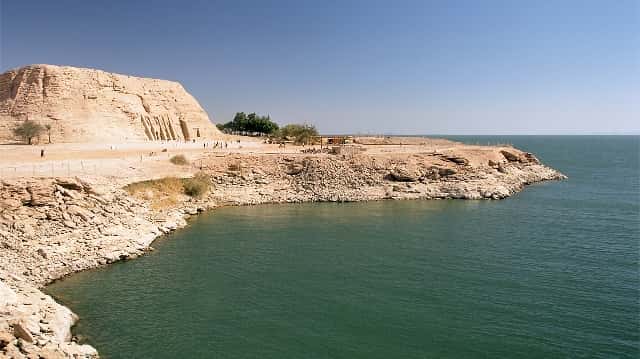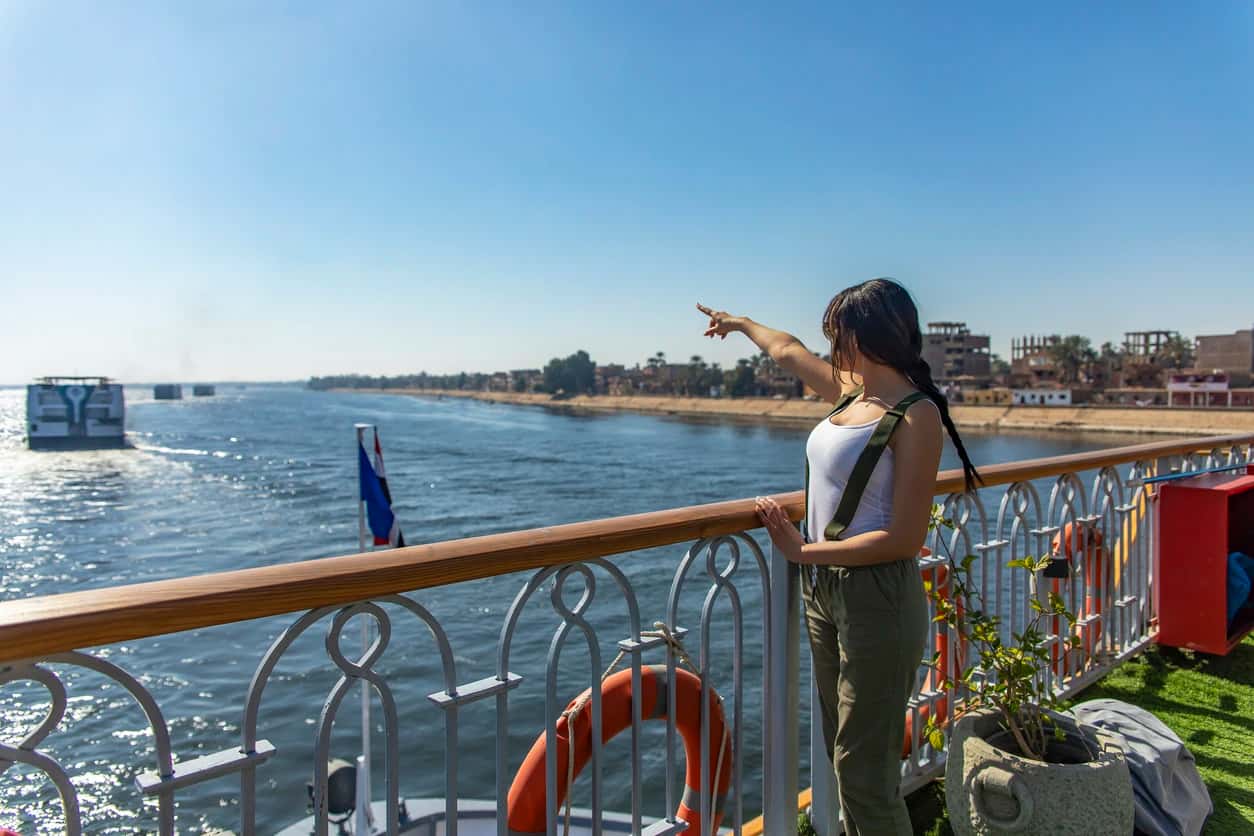
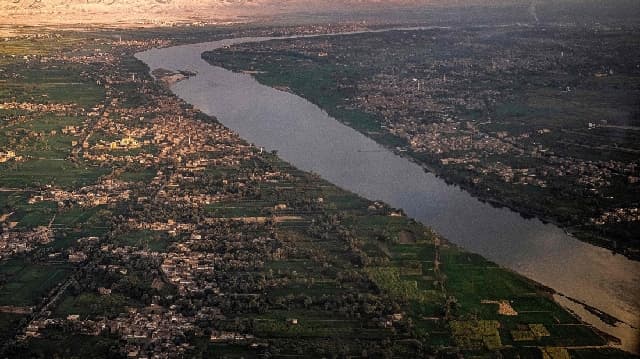
The Nile River powered pharaohs, fed empires, and connects Egypt to this day. Discover its impact—click to explore more!
The Nile River, stretching over 6,650 km through 11 African countries, has been Egypt’s source of life for over 5,000 years. Its annual floods brought fertile soil, enabling agriculture, trade, and the rise of ancient civilization. Nearly all Egyptians still live near its banks, relying on it for water, transport, and sustenance. From shaping ancient calendars to sustaining modern cities like Cairo, the Nile remains the heart of Egypt—both historically and today.
The Nile isn’t just a river—it’s the thread that has stitched together thousands of years of civilization across northeastern Africa. Even today, its presence continues to shape the land, lives, and legacy of the region.
Spanning eleven countries, from Tanzania and Uganda all the way to Egypt, the Nile carves its path northward, one of the few rivers in the world to do so.
Covering over 3.3 million square kilometers, the Nile’s drainage basin fuels nearly a tenth of the African continent, transforming arid landscapes into fertile lifelines.
The Nile begins at Lake Victoria and Ethiopia's highlands, where the White and Blue Nile merge in Sudan, forming the river that flows into Egypt—carrying life with it.
Entering Egypt at Lake Nasser, the Nile flows north for 1,380 km before splitting into the Damietta and Rosetta branches, feeding the fertile Nile Delta.
The Nile averages 8–11 meters deep, narrowing to 350 meters at Silwa Gorge and widening to 7.5 km near Edfu. Its rich silt makes the land along its banks incredibly fertile.
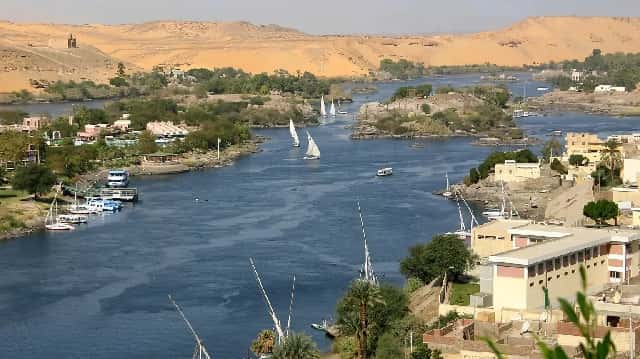
For over 5,000 years, the Nile River was more than a water source—it was the heartbeat of one of history’s most enduring civilizations. Unlike other ancient cultures that rose around multiple rivers, Egypt flourished along a single, life-giving artery cutting through an unforgiving desert.
Early settlers along the Nile grew into the influential Naqada culture, with key centers like Nekhen and Abydos. Neolithic farming laid the groundwork for lasting civilization.
The Nile’s yearly floods made farming reliable, enabling food surpluses that fueled Egypt’s growth, innovation, and early trade and writing systems.
Beyond crops, the Nile supplied:
The Nile’s flow united Upper and Lower Egypt, leading to their unification around 3150 BCE under King Menes. This formed one of history’s first nation-states, with Memphis as its capital.
Life in ancient Egypt moved with the Nile’s pulse. Its regular floods defined the calendar and dictated farming routines, forming a stable agricultural system unmatched in the ancient world.
Rainfall in the Ethiopian highlands caused the Nile to rise each June, peaking in September before receding by October. This natural irrigation system left behind the fertile “Black Land”—a stark contrast to the surrounding desert.
The fertile valley supported everything from emmer wheat and barley to flax, onions, figs, and grapes. Egyptians also cultivated herbs and medicinal plants, enriching both their cuisine and healing practices.
To expand productivity, Egyptians engineered canals and basins that captured floodwater. Tools like the shaduf made irrigation efficient, helping nourish crops even during dry spells. Simple instruments like wooden plows and sickles powered a farming system that fed a growing empire.
To the ancient Egyptians, the Nile was sacred—a divine presence that shaped their worldview, inspired myths, and guided spiritual life.
The myth of Osiris—killed by his brother Set, restored by Isis, and reborn as ruler of the underworld—mirrored the Nile’s seasonal flood. This connection reinforced beliefs in renewal and the afterlife.
Deities personified the Nile’s powers:
Religious festivals, like the Opet Festival, and the New Year timed with Sirius’s rising, reflected the Nile’s rhythms. Honoring the river helped maintain cosmic harmony and spiritual balance.
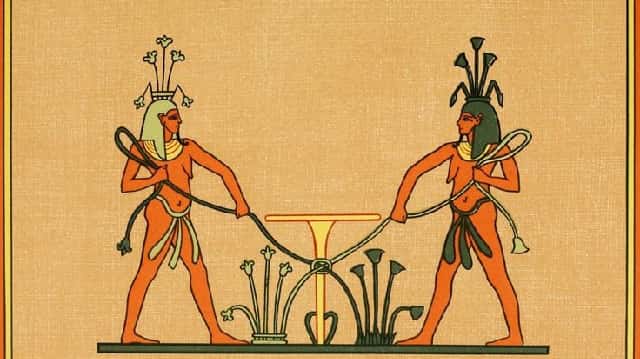
More than a river, the Nile was Egypt’s heartbeat—linking distant regions, fueling trade, and making life possible in an unforgiving desert.
Egyptians advanced from papyrus boats to sturdy wooden ships made of acacia and cedar, tailored for river travel, heavy cargo, and sea trade. The Nile’s current and winds made two-way navigation easy and efficient.
The river stitched Upper and Lower Egypt together into a thriving economy. Traders pushed into Nubia for gold and ivory, reached the Red Sea via desert trails, and sailed to Cyprus and Crete. Goods like grain, papyrus, and incense flowed along these routes, building the wealth that funded temples, tombs, and towering monuments.
Even today, the Nile remains central to Egypt’s survival—only now, it’s shaped by modern engineering and global politics.
The Aswan High Dam, completed in 1970, changed everything. It curbed floods, powered millions of homes, and ensured year-round irrigation. Yet it also trapped fertile silt, altered ecosystems, and displaced thousands. Farmers now rely on fertilizers, and coastal erosion continues to grow.
New upstream projects, especially Ethiopia’s Grand Renaissance Dam, have raised alarm in Egypt. In a country where water is life, managing the Nile’s future requires diplomacy, planning, and international cooperation.
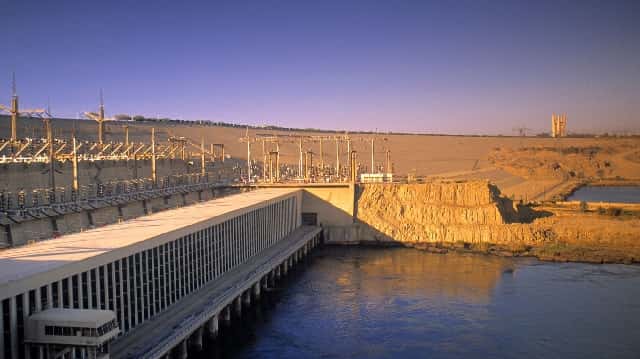
Modern travelers experience Egypt’s ancient wonders aboard Nile cruises between Luxor and Aswan. These floating hotels glide past legendary sites like the Valley of the Kings, Karnak, and Philae, blending comfort with history in every mile.
The river still shapes daily life for many Egyptians. Farming, fishing, and riverside markets flourish along its banks, while feluccas drift by at sunset—quietly carrying on timeless traditions. The bond between Egypt and the Nile is as alive today as ever.
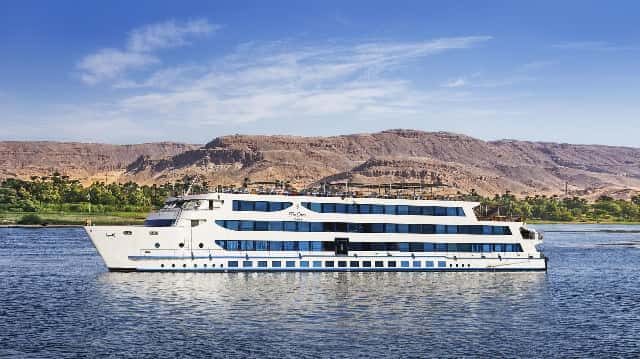
For over 5,000 years, the Nile has been Egypt’s lifeline—shaping its land, uniting its people, and inspiring its beliefs. Ancient Egyptians lived by its rhythm, saw it as sacred, and built a civilization around its gifts.
Even today, the river remains essential—feeding farms, powering cities, and connecting past to present. The Nile isn’t just a river; it’s Egypt’s soul, flowing through every chapter of its history.
Spanning around 6,650 km, the Nile is considered the longest river on Earth. It travels through 11 countries, including Egypt, Sudan, Ethiopia, and Uganda—uniting a vast stretch of Africa.
The Nile’s yearly floods enriched the soil with silt, making farming possible in the desert. Egyptians timed planting and harvesting with its rhythm, creating a three-season calendar around its flow.
The river was sacred, personified by gods like Hapi, Khnum, and Sobek. Its cycles inspired the myth of Osiris, symbolizing death and rebirth, and cemented the Nile’s place in spiritual life.
It was Egypt’s main artery for trade and travel. Goods like grain, gold, and papyrus moved along its waters, connecting cities and enabling commerce with neighboring lands and the Mediterranean world.
Since 1970, the dam has helped control flooding, generate power, and support irrigation. However, it also reduced natural silt deposits and brought environmental changes, including Delta erosion.
In northeastern Africa, flowing northward through Egypt—the heart of its story.
It gave water, food, fertile land, and a highway for travel and trade—fueling a civilization that thrived for millennia.
Depth ranges from 2 to 10 meters, shifting with geography and the season.
Roughly 1,300 km of the river cuts through Egypt, from Aswan to the sea.
It’s the world’s longest river, central to Egypt’s history, economy, farming, and spiritual life—an irreplaceable thread in its cultural fabric.
Cruise the Nile River on luxury trips to Egypt. Sail past temples, tombs, and timeless beauty—book your unforgettable journey now!
